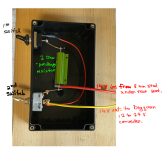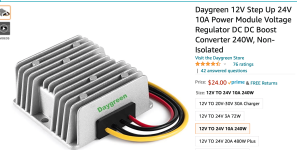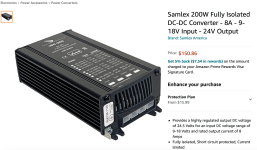zacksc
100 W
fatty said:But you're not asking about amps, you're asking about volts.zacksc said:True. I don't really know much, but I just kind of thought that with bike batteries you can charge at 2 amps or 4 amps or 6 amps or ..., and I was hoping to be able to charge my E1000 a little faster. I would be fine with 36 volts (216 Watts), but I haven't seen a lot of options for 12 volt to 36 volt boost converters. C/6 is awfully slow.
It's not a limit, it's just designed for the voltage of the battery inside. It's in Tech Specs:zacksc said:I didn't know if they really meant it when they put those limits in the specs or if they had just chosen to use a small 24 volt converter charger to keep the price low.
E1000: 21.6V
E1500: 36V
Looking at those voltages you just posted, I am guessing now that the E1000 is 6 groups in series, 6 x 3.6 = 21.6 volts. And the the E1500 is 10 groups in series (36 volts). I get that now.
I guess I am not sure at all how the MPPT charging actually is implemented in the Jackery. I don't understand how you can charge a 21.6 volt battery with a 12 volt input, or how you can charge it twice as fast with a 24 volt input. How does that work? What limits or controls the current? What limits the range of voltages one can supply at the 8 mm charging port input?
At full charge the E1000 must reach about 25.2 volts (6x4.2) and yet you can charge it to full with a 12 or 13 volt input at the 8mm? I would love to understand that.





